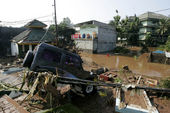OF THE
TIMES
A nation that continues year after year to spend more money on military defense than on programs of social uplift is approaching spiritual doom.
Bluestones number 56 would fit with the 56 phases of the moon. For a different timeline to all ancient monuments including Stonehenge try Mario...
Quote: " They are the ones robbing your granny and my parents with phishing emails. So, Russia is directly challenging us at all levels." What do...
In my view, this is an omen for UK. From Humpty Dumpty, "All the kings horses and all the kings men, couldn't put Humpty Dumpty together again."...
Ann 88. However they are going to be forced to recognise the mad killer bastards in their midst. Given the excesses, the G word, those who have...
Start a Substack. You long-winded commenters. Don’t waste your words here for someone else to steal and monetize, because they certainly will not...
To submit an article for publication, see our Submission Guidelines
Reader comments do not necessarily reflect the views of the volunteers, editors, and directors of SOTT.net or the Quantum Future Group.
Some icons on this site were created by: Afterglow, Aha-Soft, AntialiasFactory, artdesigner.lv, Artura, DailyOverview, Everaldo, GraphicsFuel, IconFactory, Iconka, IconShock, Icons-Land, i-love-icons, KDE-look.org, Klukeart, mugenb16, Map Icons Collection, PetshopBoxStudio, VisualPharm, wbeiruti, WebIconset
Powered by PikaJS 🐁 and In·Site
Original content © 2002-2024 by Sott.net/Signs of the Times. See: FAIR USE NOTICE

by living at the edge of the sea still taught to stop everything and run for higher ground when they see these signs?:
"People were saying that there was the shake and the ocean went out within five minutes" There is a very distinct withdrawal of the water out into the ocean before a tsunami. I saw it when I lived in Hawaii in the 70s--old-time locals told me to run for high ground if I saw this happening as the really high water would come in minutes. Is it possible that a significant number of people presently living at the ocean's edge are unaware of this fact, and do not know the warning signs nature gives for an approaching tsunamis?
Instead of passively waiting for someone to tell them what to do when an emergency is coming (which is also a good thing to have), in addition people should be taught to take immediate action on their own their and warn their neighbors. Are local governments lax in teaching people the signs or are people foolishly not paying attention? Both probably.
Just some early morning pondering of the latest and surely not last natural disaster.
shellycheval